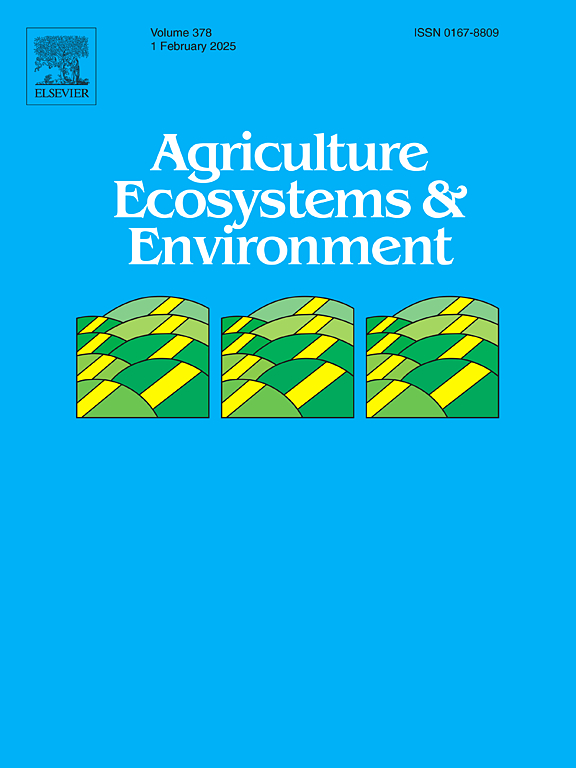Effects of litter removal on grazing excluded grassland: A 5-year test with contrasting exclusion durations and topographic conditions
IF 6.4
1区 农林科学
Q1 AGRICULTURE, MULTIDISCIPLINARY
引用次数: 0
Abstract
Litter removal is an important practice for the management of restored grasslands, while its effects on soils and plant communities remain unclear, mainly due to the variations with time and topographical conditions. To fill this knowledge gap, we compared the effects of litter removal on soils (moisture and net nitrogen mineralization) and plant communities (aboveground biomass, species diversity and temporal stability of the community and five functional groups) in different topographical scales (slope aspect and position) in the 10-year and 35-year grazing exclusion grasslands with a 5-year litter removal experiment. We found that soil moisture and net nitrogen mineralization, and plant community productivity were consistently lower in plots without litter in both 10-year and 35-year grazing exclusion grasslands than those in plots with litter. Litter removal significantly increased species diversity but decreased the temporal stability of community biomass in the 35-year grazing exclusion grassland, but not in the 10-year grazing exclusion grassland. The effects of litter removal on soil environments and plant communities varied with topographical conditions. Moreover, the temporal stability of community biomass after litter removal was largely determined by changes of the functional group asynchrony in the 10-year grazing exclusion grassland, but by functional group stability in the 35-year grazing exclusion grassland. Importantly, nitrogen mineralization mediated the mechanisms by which litter removal affected community stability. Our findings add novel evidence for the importance of litter management in regulating the ecological processes of grazer-excluded rangelands.
清除凋落物对未放牧草地的影响:一项5年试验,对比了未放牧持续时间和地形条件
凋落物清除是恢复草地管理的一项重要实践,但其对土壤和植物群落的影响尚不清楚,主要是由于时间和地形条件的变化。为了填补这一空白,我们通过5年的凋落物去除实验,比较了10年和35年不同地形尺度(坡向和位置)下凋落物去除对土壤(水分和净氮矿化)和植物群落(地上生物量、物种多样性、群落时间稳定性和5个功能群)的影响。研究发现,在10年和35年的禁牧草地上,无凋落物样地的土壤水分、净氮矿化和植物群落生产力均低于有凋落物样地。35 a禁牧草地凋落物清除显著增加了群落多样性,但降低了群落生物量的时间稳定性,而10 a禁牧草地则没有。凋落物清除对土壤环境和植物群落的影响随地形条件的不同而不同。此外,凋落物去除后群落生物量的时间稳定性主要取决于10年禁牧草地功能群的非同时性变化,而35年禁牧草地功能群的稳定性则决定于此。重要的是,氮矿化介导了凋落物清除影响群落稳定性的机制。我们的发现为凋落物管理在调节放牧草地生态过程中的重要性提供了新的证据。
本文章由计算机程序翻译,如有差异,请以英文原文为准。
求助全文
约1分钟内获得全文
求助全文
来源期刊

Agriculture, Ecosystems & Environment
环境科学-环境科学
CiteScore
11.70
自引率
9.10%
发文量
392
审稿时长
26 days
期刊介绍:
Agriculture, Ecosystems and Environment publishes scientific articles dealing with the interface between agroecosystems and the natural environment, specifically how agriculture influences the environment and how changes in that environment impact agroecosystems. Preference is given to papers from experimental and observational research at the field, system or landscape level, from studies that enhance our understanding of processes using data-based biophysical modelling, and papers that bridge scientific disciplines and integrate knowledge. All papers should be placed in an international or wide comparative context.
 求助内容:
求助内容: 应助结果提醒方式:
应助结果提醒方式:


